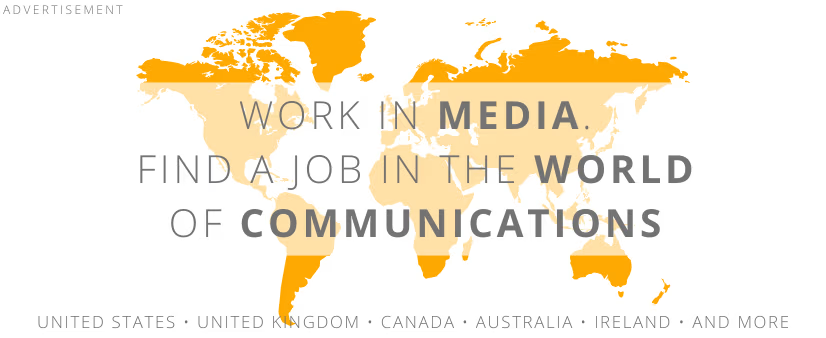 illustration: DALL-E
illustration: DALL-EThe latest report "Women and Leadership in the News Media 2025: Evidence from 12 Markets", authored by dr Amy Ross Arguedas, Mitali Mukherjee and prof. Rasmus Kleis Nielsen from the Reuters Institute, paints a picture of stagnation and resistance to gender equality in journalism. Even though women make up an average of 40% of newsroom staff across the studied countries, they hold just 27% of editor-in-chief roles.
Symbolic growth, not systemic change
The change compared to 2024 is only three percentage points - back then, women made up 24%. While this is the highest level since the study began in 2020 (23%), it`s far from a breakthrough. Reality still favors men, even in countries where women outnumber men in journalism.
| Year | Percentage of Women in Top Editorial Roles |
|---|---|
| 2020 | 23% |
| 2024 | 24% |
| 2025 | 27% |
The average annual turnover rate for editors-in-chief from 2021 to 2025 was 19%. Between 2024 and 2025, 14% of editorial positions changed hands - less than in previous years, signaling a slowdown.
However, 34% of new appointments went to women. That`s up from 24% the year before. Among brands included in the sample for the first time, women made up 38% of top editorial roles. Still, these figures fall short of parity.
Global differences. Newsroom disparities
Country-by-country variation is significant. The United Kingdom topped the list this year - surpassing the United States for the first time. South Korea had the lowest percentage of female editors-in-chief - just 7%.
Percentage of Women in Editorial Leadership (2025):
- United Kingdom - 46%
- South Africa - 38%
- USA - 38%
- Finland - 36%
- South Korea - 7%
Japan saw the biggest leadership shake-up (26%), boosting women`s share by 17 percentage points - from 8% to 25%. Meanwhile, South Korea recorded a 6-point drop. These two countries were the main drivers behind the global average shift.
In many countries, women represent a large share of the journalism workforce, but they are underrepresented in newsroom leadership. In nine out of twelve analyzed markets, women reach the top less often.
The study draws on data from the Worlds of Journalism report, which highlights the gap between the number of women in journalism and those in leadership. The biggest disparities are in Brazil (28 pp), South Africa and Kenya (24 pp each), and Mexico (21 pp).
- Brazil: 49% of journalists are women, but only 21% are editors-in-chief
- South Africa: 62% of journalists are women, just 38% are editors-in-chief
- Mexico: 44% of journalists are women, only 23% are editors-in-chief
These numbers show that advancement in media structures isn`t just about how many women are in the profession - it`s about structural barriers that block career paths.
Women in public media
Meanwhile, the PSM Diversity Strategies 2025 report by the European Broadcasting Union, published in March 2025, shows that public broadcasters in Europe are increasingly effective in promoting gender equality. Women accounted for 45% of employees and 46% of leadership roles, and half of all 2023 promotions went to women. Gender balance was the most developed area of DEI efforts - 79% of organizations reported active work in this field.
While the results are promising, the issue still starts at the top. Women remain less likely to reach boards and the highest decision-making positions. Structural barriers, resistance to change, and entrenched organizational culture mean that even where gender parity looks close, power still rests mostly with men. These findings align with the later Reuters Institute report, which shows that commercial media are even further behind.
The EBU also points out that efforts focus mostly on gender and disability, while other diversity areas - like race, orientation, or religion - are addressed less systematically. This shows that even though public media have achieved more than the private sector, their strategies are still not fully balanced and need further development.
Gender in newsrooms vs. gender in society
One of the most striking conclusions of the Reuters Institute report is the lack of correlation between gender equality in society and the presence of women in newsroom leadership. Even countries that score high in the UN Gender Inequality Index, like Finland, don`t offer equal chances at the top of journalism.
This means that the media follow their own rules - not always aligned with social progress. The report highlights exclusion mechanisms specific to the industry, including sexist norms, verbal and physical abuse, and "boys` club" cultures, as described by Blumell and Mulupi in their research on the Kenyan market.
The Reuters Institute again looked at how many internet users consume content produced by women-led newsrooms.
- In Kenya, that share rose by 21 percentage points over the year - from 32% to 53%.
- In Japan and the UK, it increased by 13 percentage points each.
- In South Korea, it dropped by 12 points - reflecting a broader national decline.
While the report documents modest progress, the authors stress that equality is still a long way off. One-year changes aren’t enough to define a lasting trend. Especially in countries like the US, where DEI programs are increasingly under scrutiny. The rollback of such efforts in public institutions and media companies may stall or reverse positive change in the years ahead.
COMMERCIAL BREAK
New articles in section Media industry
Advertising market 2025. Poland, Europe and the World
Marcin Grządka
The global advertising market is growing by 8.8% in 2025 and will reach a value of 1.14 trillion dollars. The industry result in Europe records slightly lower dynamics, at the level of 5.8%. In this comparison, Poland performs clearly above the average. We will record an increase of 8.9% this year and a value of 18.56 billion PLN - estimates WPP Media in the annual report "This Year Next Year".
The print media market 2025. Three global trends
Krzysztof Fiedorek
The market value is 359.53 billion dollars, yet the erosion is visible to the naked eye. The decline for newspapers will amount to -2.3 percent. Despite this, print retains strength: it generates 76 percent of subscription revenues and enjoys 82 percent consumer trust. The future of the industry is defined by hybrid strategies and niche specialization.
Journalism in the age of AI. Why people prefer humans over machines
Krzysztof Fiedorek
Only 12% of people accept news created solely by AI, while 62% prefer those written by humans. At the same time, only 19% notice labels indicating the use of artificial intelligence, while younger audiences ask AI to explain the content to them. These are the findings of the Reuters Institute report on artificial intelligence in media.
See articles on a similar topic:
Review of media from around the world. See what they are buzzing about [LINK]
AUTOPROMOCJA Reporterzy.info
What is the media buzzing about? A review of the headlines of the most important newspapers and websites. Events of the day, country, world, media market, economy, sport, foreign media, and even gossip and curiosities. In real time and 24 hours a day. We invite you!
Artificial Intelligence in the Media. Reuters Digital News Report 2024
Krzysztof Fiedorek
AI has gained prominence in recent years, and its application in producing, distributing, and presenting news content continues to grow. However, this development is met with mixed feelings by audiences, which has significant consequences for media trust and its future.
Artificial Intelligence is ALREADY Outperforming Humans in Creativity
Krzysztof Fiedorek
ChatGPT, an AI model based on the GPT-4 engine, achieved better results than the vast majority of students in the standard Torrance Test of Creative Thinking (TTCT), which evaluates creativity. The study was conducted by researchers from the University of Montana.
User Generated Content. A minefield for journalists and media
Krzysztof Fiedorek
Over 40% of internet users judge information credibility by likes and views. Only 20% use traditional news channels as a main and first source. A Reuters Institute report highlights the scale and risks of User Generated Content and offers advice on how media can avoid falling into its trap.






























